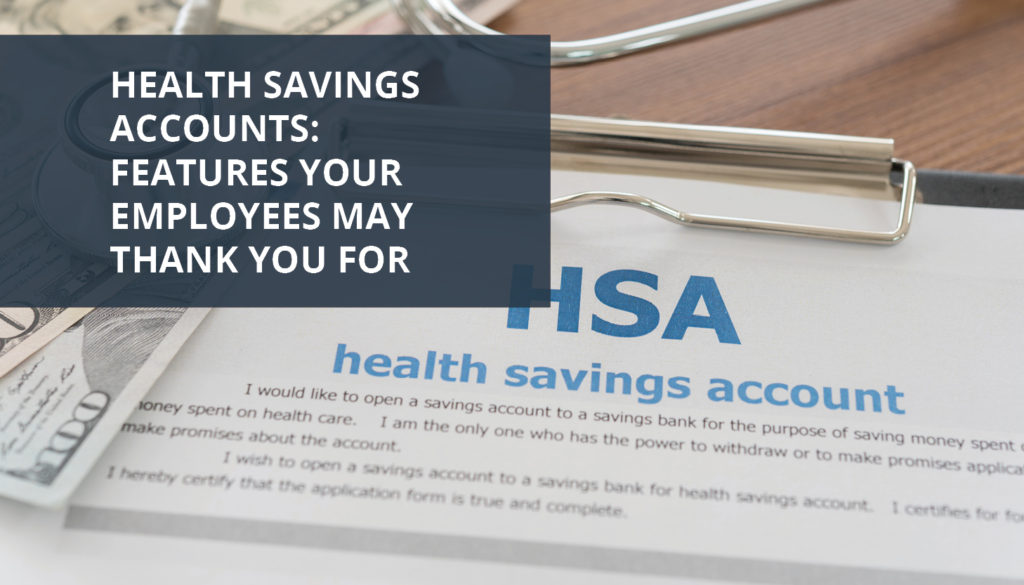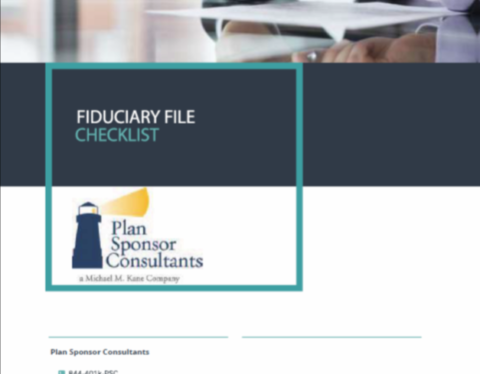For the majority of future retirees, medical expenses pose significant risk to any retirement plan, and they are only projected to rise. Medical cost estimates for couples throughout their full retirement, assuming both partners are 65, has increased $15,000 from 2016 to 2017, bringing total projections to $275,000, after Medicare coverage.[1] Even for professionals with 401k balance projections at their target retirement age over $1 million dollars, this figure is daunting. At the same time, employers seek cost-effective strategies to enhance their benefits offerings.
While the ever-coveted employer 401k match may seem like the most direct way for employers to help mitigate this financial burden for future retirees, the humble Heath Savings Account (HSA) may be a feasible, cost-effective strategy. The HSA was originally intended as a savings vehicle for those using High Deductible Health plans to cover their medical costs; the “triple tax advantage” afforded by these accounts allows employees to contribute pre-tax money that can grow tax-free and be withdrawn tax-free to pay for qualified medical expenses.
Account holders can gain additional benefits by using HSA funds to pay for long-term care insurance, which has its own set of tax benefits. Additionally, since there is no requirement that employees must reimburse themselves from their HSA accounts within a certain time frame, contributing to HSAs and saving the receipts, while still paying for medical expenses using post-tax dollars, yields maximum retirement growth potential from what the Wall Street Journal reports as “the most tax-preferred account available.”[2]
Features Employees Can Benefit From:
- Triple tax advantage – the money is contributed, invested, and withdrawn tax-free for qualified medical expenses, although some states do tax these accounts[3]
- FICA tax exemption for employee and employer contributions[4]
- Contributions roll over year after year, unlike flexible spending accounts
- The account follows the employee from job-to-job
- No maximum age to start withdrawing, unlike 401k accounts
- Additional $1000 “catch up” contributions after age 55
- After age 65, the HSA acts like a traditional tax-deferred account for non-qualified expenses, so there are no penalties if the money is needed in retirement for something else; only taxes will be owed.
- The list of qualified expenses is comprehensive and includes services not covered by Medicare, especially long-term care, a key risk to any retirement plan.1
- Account balances can be inherited by a spouse tax-free.
Who Can Take Advantage?
While any employee can enroll in a high-deductible health plan (HDHP)and open an HSA, this strategy will be most appreciated by high-earning employees who can afford to max out the yearly contribution limits and pay for their medical expenses out-of-pocket, especially those still young and/or healthy enough to incur relatively negligible medical costs over the course of many years and bulk up their account balance. Since account-holders can opt to delay the reimbursement of their qualified medical expenses indefinitely, it is possible to keep the receipts, invest the account, let it to grow, then withdraw up to the total of the qualified medical expense receipts, and use it for anything, all tax-free [5][5].The rest can still be used tax-free for qualified medical expenses in retirement.
Maximizing the Benefits
For employees to truly maximize the long-term possible benefits from these plans, employers should verify that their HSA options are through administrators who include an investment offering to allow compound interest and market growth over time. Employers looking to further enhance can even contribute directly to the accounts as part of the employees’ compensation package. It’s also important to make sure that the out-of-pocket maximum expenses on the HDHPs offered to employees do not exceed the maximum contribution limits for HSA accounts ($3,450 for individuals and $6,900 for families in 2018);2 otherwise employees’ hard-earned HSA balances are at-risk of being easily wiped out by a badly-timed medical expense.
How Employers Benefit
HDHPs are usually cheaper for employers because the higher deductible and out-of-pocket maximum limits reduce the risk borne by the insurance company, which results in lower premiums. This is especially attractive for large firms who can access lower group rates for essentially buying in bulk, and/or make contributions towards the plan premiums, wholly or in part. It is thus not surprising that many employers now offer some version of an HDHP with $0 premiums for the individual employee. The employer group can save money on premiums, while also offering “free” health insurance to employees.
The best part is that since 43% of employers were already offering these types of plans as of 2018,3 all that may be necessary for employers to enhance their benefit offerings is to have Human Resources get the word out to employees. Additional marketing materials upon new-hire benefit eligibility and benefits seminars (with a follow-up email summary) in advance of open enrollment could be all that’s required to highlight the potential of the HSA as a significant Financial Wellness Benefit and help employees get more out of their DC plan.
[1]Fidelity Viewpoints “How to plan for rising health care costs.” April 18, 2018.
[2] Wall Street Journal. “HSAs Offer Benefits Over 401(k)s.” January 30, 2016.
[3]Investopedia. “How to Use your Health Savings Account (HSA) for Retirement.” Jan 19, 2018.
[4]Investopedia. “High Income Benefits from a Health Savings Account.” Jun 11, 2015.
[5]U.S. News- Money. “How to Use a Health Savings Account for Retirement,” Sept 10, 2015.



